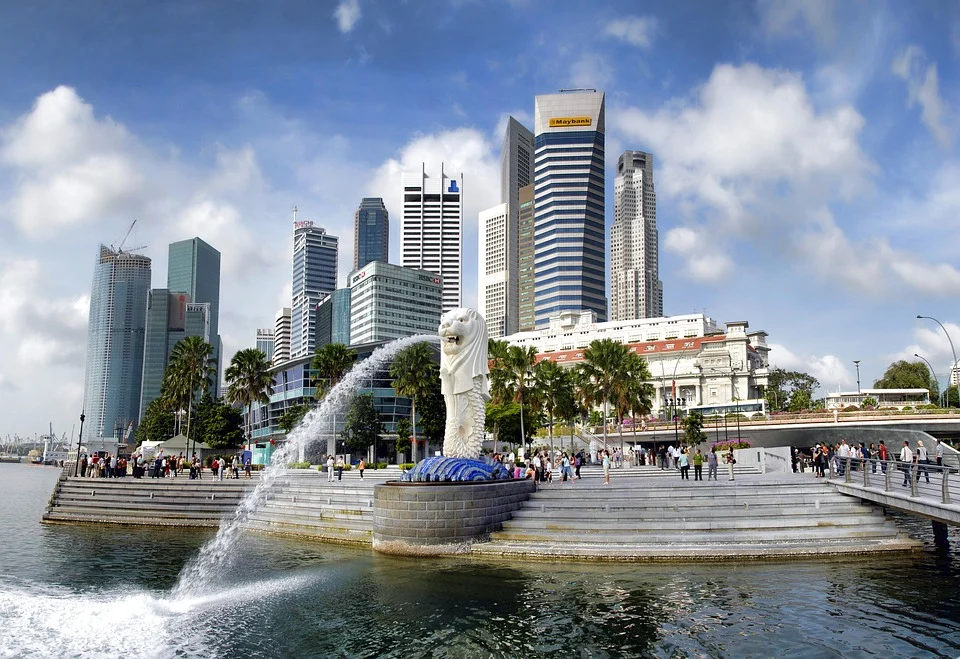
5 Things to Nail if You Are Expanding to Singapore: Part 1/4
5 Things to Nail When Expanding to Singapore
In this article, Part 1/4 of Expanding to Singapore:
Stats on Singapore
Fulfillment Structure: Cross-Border vs. Local Distribution

You are here because you are a thriving merchant in Malaysia, your business is blooming, sales are soaring, but you sense time is ripe for you to voyage into new borders. A booming eCommerce field right next door to you in Singapore has over 5.4 million Internet users, but you don’t know how to play the game. Instead, your brain keeps you up at night pounding these impeding questions:
How do I register my products before entering Singapore?
Where can I register as an entity?
How do I reach my customers there?
Will I be able to afford taxes?
Is there any way I can reduce shipping fees?
And more…
If you are spitting out these questions, we are here to break down the multifaceted complexities of cross-border fulfillment merchants like you face, so you can kickstart your expansion journey sooner with fewer worries.
Stats on Singapore
Singapore is one of the most digitally-mature societies in Asia, with high internet penetration rates and good access to high-speed internet. There is a high uptake of digital services such as e-commerce among its population. The use of e-commerce was accelerated during the COVID-19 pandemic. However, even after the pandemic restrictions have been fully lifted, e-commerce usage is expected to remain high, buoyed by the convenience afforded by online shopping, as well as the increasing popularity of new models of digital commerce. Moreover, with a literacy rate of 97.1% in 2020, it is by far easier to reach Singaporean shoppers with little to no language barrier. Accompanying that, the four national languages of the Lion City are English, Malay, Mandarin, and Tamil, no foreign tongues to Malaysians.

Despite Singapore being the smallest e-commerce market in Southeast Asia, it is the most affluent. The size of the average e-commerce basket in Singapore amounted to more than twice that of the average Southeast Asian e-commerce basket. The majority of e-commerce users in Singapore shopped online frequently, purchasing items online at least several times a month. E-commerce users in Singapore are also diversifying their online shopping experience, browsing through and using more online shopping platforms to meet their needs, and increasing the number of product categories purchased online. Their online shopping experience is also not just limited to domestic e-commerce sites – Singapore is fast becoming a cross-border e-commerce hub in Southeast Asia.
The e-commerce market revenue in Singapore is expected to reach US$8.23 billion by 2023. Along with the rest of the world, the ecommerce industry in Singapore is rapidly evolving. Revenue in the ecommerce market in Singapore is expected to reach $6.59bn in 2023 alone and grow year-on-year to $10.45bn in 2027, With an internet penetration rate of 98%, while nearly 98% of Singaporeans have smartphones, it is expected that 58% of the population will purchase goods online in the following years. According to Statista, the top products Singaporeans buy online are food and groceries, clothing, household cleaning, cosmetics and beauty, and electronics and tech products. In the ever-evolving landscape of global commerce, businesses are continually seeking ways to streamline operations and enhance efficiency. One strategic move that has gained widespread recognition is outsourcing fulfilment services, and Singapore stands out as a prime location for such operations.
In the competitive world of e-commerce, choosing fulfilment services in Singapore emerges as a strategic decision. The combination of a strategic location, robust infrastructure, a skilled workforce, cost efficiency, technological integration, and regulatory compliance positions Singapore as an ideal hub for businesses seeking to optimise their fulfilment processes and unlock the path to success.
Strike the iron while it’s hot. Question is, how do you fight the rising competition and win over success for your cross-border business?
Deciding your fulfillment structure
Amateurs discuss tactics; professionals discuss logistics.
Now, there are a few things you must understand in cross-border shipping. This is where you decide how you want to fulfill your cross-border shipping. Before you cast the dice on your fulfillment in Singapore structure, there are elements to consider such as logistics expenditure, freight, storage, delivery speed and more. Each element incurs cost, which if goes unmonitored, can swiftly translate into overhead costs or metamorphose into a high expense-to-revenue ratio.
Let’s take a look at several advantages and disadvantages of the two cross-border fulfillment structures and how they differ in supply-chain operations.

Structure 1:
Cross-border shipping
Cross-border shipping is the process where:
✓ Goods transported from country of origin to destination country
✓ No inventory stored in destination country
✓ Goods shipped upon sale basis
✓ Goods pass through customs, import duties, and other legalities
(getting a 3PL who cross-border fulfills will soak up all your heavy work)
✓ Shipping costs are incurred by sales
✓ Longer lead time for customers
✓ Lower recurring costs
Structure 2:
Local distribution model
Local distribution model is the approach where:
✓ Inventory is stored in destination country
✓ Owner sets up a warehouse in destination country
✓ Owner manages local inventory
✓ All-time storage costs
✓ Shorter lead time for customers
✓ Higher recurring costs
Comparing the two structures
If your concern is delivery time, most Singaporeans are happy with international orders considering their spending on foreign websites. If you are looking at cross-border shipping, you will need to obtain approvals from customs, agencies, and so on, but it will save you cost with just a warehouse in Malaysia.
If you are looking to establish your brand and presence in Singapore for the long term, then you will need to be closer to your customers and build customer relationships through better and faster shipping times. This can be achieved through the local distribution method. To achieve this, you will need to think of offices, licences, and warehousing to operate. Will your product demand be sufficient to meet those costs? Keep in mind, renting in Singapore costs a pretty penny due to its land scarcity.
Cross-border fulfillment partners have the expertise, connections, and infrastructure that you can benefit from if you are in the dark in decision-making. In the long run, it is ideal to consider partnering up with a seasoned 3PL cross-border fulfillment centre.
Time is money. – Benjamin Franklin
